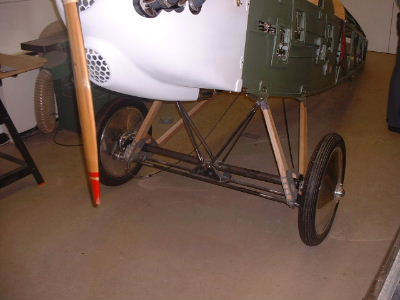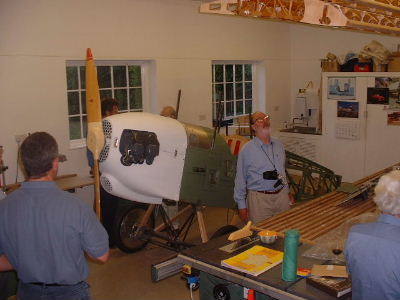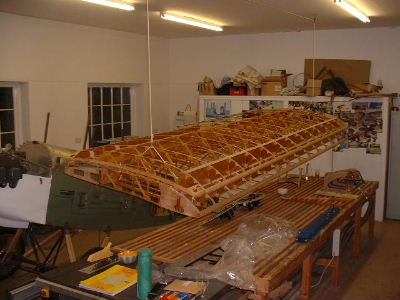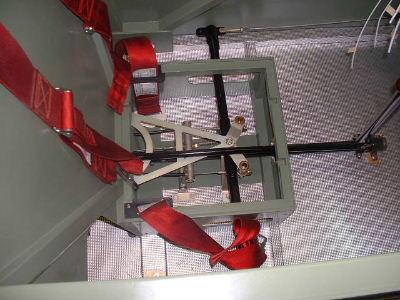For almost a year I have been building my engine cowling.
Yes, a year! But anything to keep the peace. Itís all the fault of my
son, John, you see. John is a race engineer with Lotus and is heavily
Ďin toí carbon fibre, and it was his opinion that any self-respecting
aircraft constructor should use this wonder material whenever possible.
I had had thoughts of happily playing about with sheets of aluminium
and rivets, but no, carbon fibre it had to be.
To get the shape, the engine was mounted on a dummy
firewall of the same shape, and upended so that the crankshaft was vertical.
Plastic film covered the engine and we were now ready. Brown paper shuttering
was built around the engine and a two-part foam was poured into the
top to cover the engine. One or two leaks from the joint between the
paper and the dummy firewall caused the liquid foam to spill onto the
floor. Donít do it. The mess is horrendous.
After an hour or so the foam was hard and easily carved
with the bread knife. Over-enthusiasm with the foam meant that large
quantities of foam had to be removed before a reasonable shape emerged.
There was lots of standing back in a thoughtful pose before the final
shape was agreed by all the family to be worthy of a Pietenpol. The
remaining task in making the plug was to cover the foam in car body
filler, sanding to perfection and applying more coats of two pack car
paint than I care to remember. Itís sounds quick and easy but the toil
and mess in all these stages was incredible. If only I could have just
taken this beautiful, shiny plug and bolted it to the front of the Ďplane.
A three-part mould was constructed from fibreglass,
which bolted together. This came out very well and is very solid. Removing
the plug from the engine involved more chaos in the workshop, but I
was glad to get back to some form of normality.
Rough fibreglass layups were done in the mould to prove
them, and this gave me the first chance to look at my design on the
completed fuselage. The styling is perhaps a bit modern, but I console
myself with the thought that Bernard P. might have done something similar
had he been alive at the turn of the millennium and had access to modern
materials.
The moulds needed modifying so that a joint-line return
could be constructed with recesses for natty catches, etc. As I write,
the bottom half is moulded in carbon fibre and fits like a dream. The
top will follow shortly. During all of the above, I also constructed
two CF engine ducts. This material is truly amazing. Itís incredibly
light and fantastically strong.
As I near the end of this three-act drama I think "It
wasnít too bad. There wasnít that much mess". But
it was, and there was!



